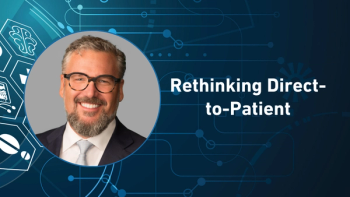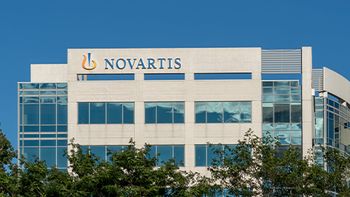
- Pharmaceutical Commerce - September/October 2015
Maintaining your digital marketing assets
Promotional content produced for, or derived from, digital media presents its own management and compliance complexities
The digital marketing environment
has shifted and evolved dramatically over the last few decades. The rise of the digitally native generation, coupled with the consumer driven technology marketplace that exists in a continual cycle of innovation and development, has led to a changeable and dynamic digital marketing environment where the brand-consumer interaction has become almost unrecognizable from that of a decade ago.
Landmarks such as the February 2010 release of the first iPad have unleashed a tidal wave in the adoption of mobile technology, and the smart technology revolution that ensued has shaped the way consumers connect with the world around them, even when it comes to their medical needs. This in turn has evolved the relationship the pharmaceutical industry has with their end-user, patients; with an ever-present need to respond and deliver communications directly to patients and not just healthcare professionals. The continuous evolution of the digital world means patients are demanding an interactive, two-way dialogue with pharma companies about the efficacy and safety of their products.
From a regulatory perspective, pharma companies must fully align digital and social marketing with their global business goals from the outset, ensuring that accelerated compliance processes are embedded at the very heart of digital customer engagement and outreach programs for full compliance accuracy.
Managing digital assets
Rich digital media content such as social media, videos, blogs and interactive discussion help facilitate communication in the patient-centric marketing model. They enable stakeholders to engage with the brand, understand the potential health and social outcomes of the treatment, and allow patients to have a role in their therapy.
The vast majority of brand-related content is complex with highly specialized requirements for its management. Digital imagery, social media, photographs, print publishing files, video and multimedia presentations, and other rich media are an increasingly critical component of each new product launch. These assets are expensive to create, and even more expensive to re-create if the content can’t be located for a new project. They also come with significant added complexity in terms of ensuring their compliance in the critical framework of corporate integrity.
While adding huge scope for quantum improvement in creativity, this rich media content, however, comes with significant additional challenges for the marketer. Rich media files cost a great deal to develop and are typically large in size. They need to be available in a globalized marketing environment where they must be regionalized, translated and accurate across the organization and affiliates, often at Internet speed. This is further enhanced by the multifaceted regulatory challenges, where content often needs to comply across larger geographies than traditional marketing materials did.
In order to be able to use rich digital media content effectively, companies require a way to manage centralized control of their content while users require the ability to access and share assets in a controlled manner across the globe. By fully integrating cloud-based software platforms, global life science companies have the opportunity to unify their supply chain within a single platform, maximizing invested time in content development, review and approval—helping to achieve content and brand alignment across a globalized marketplace.
Managing the supply chain of content (from creation to delivery) is both costly and time-consuming. Getting this critical marketing content into the hands of the sales organization and regional marketing teams (and ultimately the healthcare professional and patient) presents an enormous challenge and a significant savings opportunity. By shortening the marketing content supply chain and streamlining global efficiencies, pharmaceutical companies can become significantly more agile—and they can gain tremendous time-to-market and commercial advantage. For this reason, there is an explosive demand for tools to address this need for digital asset management in a regulated industry.
Maximizing outreach—social media
Beyond the core development of digital assets is the ever-growing minefield of social media, which has grown exponentially, but also represents a challenging and foreign environment for pharma. Driven by ‘consumers,’ the ‘social conversation’ is unavoidable and creates an evolving, unprecedented conversation between patient and industry.
In the patient-centric world where rich digital media is a key to success, pharmaceutical marketers require more advanced and responsive capabilities to better position brands to achieve their marketing goals. Adaptability and responsiveness to social media in particular is critical in an environment with evolving compliance and regulatory changes.
A common fear of embracing social media within any integrated marketing strategy is that messaging and dialogue can be hard to control. This can be true, but as Dr. Matis-Mitchell (Elsevier Life Sciences) remarked; “although pharma perceives some risk in using social media, it’s actually riskier not to use it.” Social media offers a forum to connect with patients and understand their needs at another point of their treatment or disease state.
The key for managing and effectively engaging with social media is clearly defined guidance on social media usage; outlining how to listen to, react with and report on patient interactions in this arena:
1) Create a Social Media policy:
Social media can have so many unexpected and unpredictable outcomes, it is very important to have a clear and defined policy in place before any exact outreach activity is undertaken. This should be distributed to all staff, giving employees instruction on what to do, how to operate on the various social media channels and what to do in the event of a crisis.
2) Have a plan and defined objectives
Consider the core objectives of using social media, and make sure this a central part of the integrated marketing strategy. This should also include risk evaluation. Be clear on your motivation for using social media in the first place.
3) Know your customers:
Understand what platforms the customers are using, as well as the key themes and interests that are shaping the conversation. Create appropriate content to suit the different channels, audiences and messages.
4) Work with people who ‘just get it’:
When allocating your internal resources, make sure your social media managers truly understand the reasons for engaging with customers in this way and how to communicate properly through each channel, using the most appropriate language.
5) Consider regulation:
Ensure complete clarity on all regulations as the normal rules apply, so any promotional content will need to be submitted for pre-approval.
6) Monitor:
Analyze responses, look at results, and commit to the long term. Expect interaction with customers through social media to be on-going, and will require continual investment.
7) Learn from mistakes:
Make sure to move forward quickly from any mistake, learn from them to avoid repetition and always follow your policy.
Zinc Ahead’s flagship product, Zinc MAPS, enables streamlined workflows for social media engagement. The product enables marketing teams to review and annotate multiple pieces of digital content intended for social media, web, video and app interactions. It allows for accelerated review, pre-defined terms prior to sign-off, and also the inclusions of social media policy and post-checklist within the system, so that the policy can be referred to at any point of the development lifecycle. Another valuable capability is the compatibility with FDA’s electronic Common Technical Document protocol (eCTD), which enables fast, electronic submission of promotional materials to FDA’s Office of Prescription Drug Promotion, for which new guidance was published in April 2015.*
Digital is now
The relevance of digital marketing is only set to grow. The potential benefits of rich digital content and social media are enormous; empowering patients to take control of the treatment of their disease; enabling the pharmaceutical and healthcare industries to have direct relationships with their customer and ultimately improving health outcomes.
It is clear that companies need to ensure they make big gains in their use of digital positioning to maximize their outreach and engagement programs by delivering material consistently across multiple channels while staying within regulatory guidelines.
With this comes the need to navigate the complexities of digital materials and communication, including more complex planning, content and accelerated approvals. These perceived barriers have caused a reticence in the industry to embrace the gains that are readily available from digital and social media.
Cloud software systems that incorporate digital asset management solutions provide a step change in digital pharmaceutical marketing. They offer the marketer a method to simplify and accelerate critical time-to-market processes, comply with regulation, improve productivity and efficiency, and ultimately be more creative in their marketing strategies.
*
ABOUT THE AUTHOR
James Brown is founder and CEO of Zinc Ahead (Oxford, UK; US HQ in Princeton, NJ;
Articles in this issue
about 10 years ago
Cold Chain 2015 Directoryover 10 years ago
Cold Chain Global Forum takes shapeover 10 years ago
Driving Traceability Requirements to True Business Valueover 10 years ago
Next-Generation Serializationover 10 years ago
A Conversation with Steve Collis, AmerisourceBergenover 10 years ago
The quality drive at contract manufacturersover 10 years ago
The 2015 Biopharma Cold Chain Landscapeover 10 years ago
Pharma is under-managing its multi-channel marketing effortsover 10 years ago
Predicting pharma's data-driven futureNewsletter
Stay ahead in the life sciences industry with Pharmaceutical Commerce, the latest news, trends, and strategies in drug distribution, commercialization, and market access.




